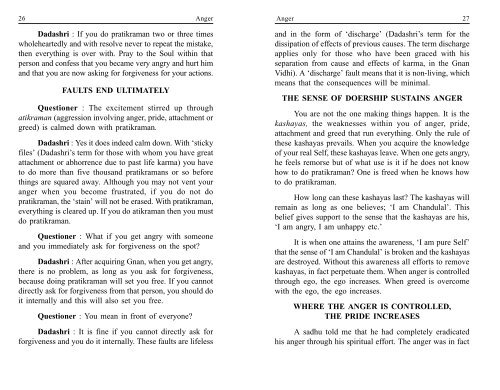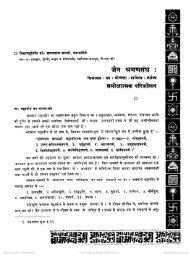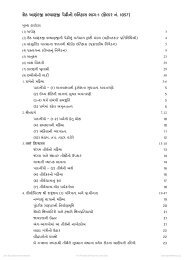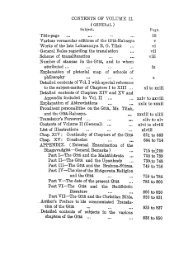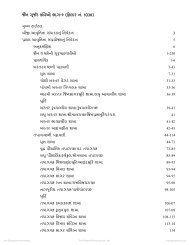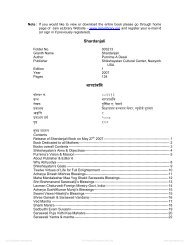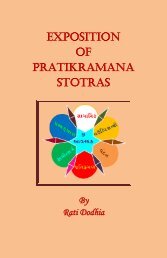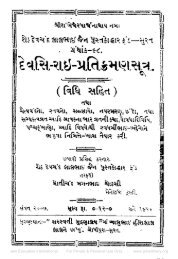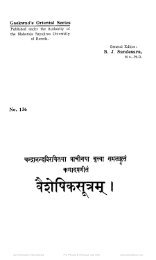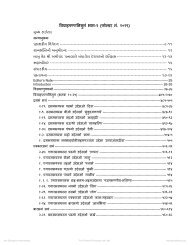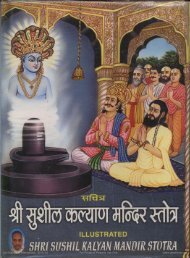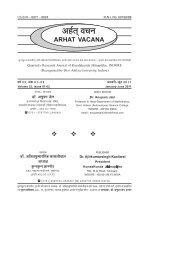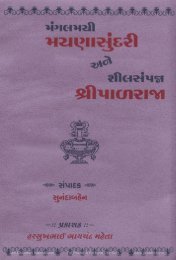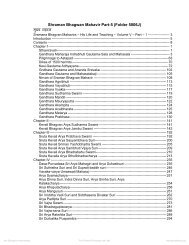Anger - Jain Library
Anger - Jain Library
Anger - Jain Library
You also want an ePaper? Increase the reach of your titles
YUMPU automatically turns print PDFs into web optimized ePapers that Google loves.
26 <strong>Anger</strong> <strong>Anger</strong> 27<br />
Dadashri : If you do pratikraman two or three times<br />
wholeheartedly and with resolve never to repeat the mistake,<br />
then everything is over with. Pray to the Soul within that<br />
person and confess that you became very angry and hurt him<br />
and that you are now asking for forgiveness for your actions.<br />
FAULTS END ULTIMATELY<br />
Questioner : The excitement stirred up through<br />
atikraman (aggression involving anger, pride, attachment or<br />
greed) is calmed down with pratikraman.<br />
Dadashri : Yes it does indeed calm down. With ‘sticky<br />
files’ (Dadashri’s term for those with whom you have great<br />
attachment or abhorrence due to past life karma) you have<br />
to do more than five thousand pratikramans or so before<br />
things are squared away. Although you may not vent your<br />
anger when you become frustrated, if you do not do<br />
pratikraman, the ‘stain’ will not be erased. With pratikraman,<br />
everything is cleared up. If you do atikraman then you must<br />
do pratikraman.<br />
Questioner : What if you get angry with someone<br />
and you immediately ask for forgiveness on the spot?<br />
Dadashri : After acquiring Gnan, when you get angry,<br />
there is no problem, as long as you ask for forgiveness,<br />
because doing pratikraman will set you free. If you cannot<br />
directly ask for forgiveness from that person, you should do<br />
it internally and this will also set you free.<br />
Questioner : You mean in front of everyone?<br />
Dadashri : It is fine if you cannot directly ask for<br />
forgiveness and you do it internally. These faults are lifeless<br />
and in the form of ‘discharge’ (Dadashri’s term for the<br />
dissipation of effects of previous causes. The term discharge<br />
applies only for those who have been graced with his<br />
separation from cause and effects of karma, in the Gnan<br />
Vidhi). A ‘discharge’ fault means that it is non-living, which<br />
means that the consequences will be minimal.<br />
THE SENSE OF DOERSHIP SUSTAINS ANGER<br />
You are not the one making things happen. It is the<br />
kashayas, the weaknesses within you of anger, pride,<br />
attachment and greed that run everything. Only the rule of<br />
these kashayas prevails. When you acquire the knowledge<br />
of your real Self, these kashayas leave. When one gets angry,<br />
he feels remorse but of what use is it if he does not know<br />
how to do pratikraman? One is freed when he knows how<br />
to do pratikraman.<br />
How long can these kashayas last? The kashayas will<br />
remain as long as one believes; ‘I am Chandulal’. This<br />
belief gives support to the sense that the kashayas are his,<br />
‘I am angry, I am unhappy etc.’<br />
It is when one attains the awareness, ‘I am pure Self’<br />
that the sense of ‘I am Chandulal’ is broken and the kashayas<br />
are destroyed. Without this awareness all efforts to remove<br />
kashayas, in fact perpetuate them. When anger is controlled<br />
through ego, the ego increases. When greed is overcome<br />
with the ego, the ego increases.<br />
WHERE THE ANGER IS CONTROLLED,<br />
THE PRIDE INCREASES<br />
A sadhu told me that he had completely eradicated<br />
his anger through his spiritual effort. The anger was in fact


